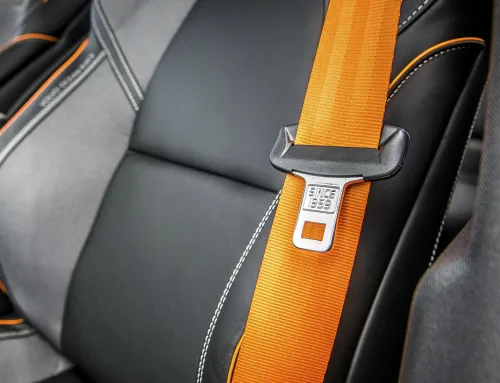Winter driving presents a variety of challenges to both the driver and the vehicle. Snow and ice can lead to dangerous driving conditions, but with proper preparation and awareness, accidents can be avoided. Snow tires are essential to safe winter driving, and they offer many benefits that regular tires simply cannot provide. Moreover, understanding the connection between proper tires and avoiding traffic tickets, such as stop sign tickets or red-light tickets, will emphasize the need to make the right choices.
The Importance of Snow Tires for Winter Driving
Snow tires, specifically designed for the challenging conditions that winter weather brings, are not merely an accessory but a vital necessity for safe driving. The importance of having proper tires installed on your vehicle cannot be overstated, and here is why:
Enhanced Road Traction
They offer a substantial improvement in traction on snowy and icy roads. This is mainly due to their unique rubber composition and tread design, tailored to grip the road firmly in winter conditions. Their superior performance over regular tires leads to:
- Improved Braking: They allow for more effective braking on icy roads, reducing the likelihood of stop sign violations or red light fail-to-stop occurrences.
- Better Handling: Enhanced control over steering prevents skidding, minimizing the chances of receiving a careless driving or rolling stop ticket.
- Safer Turns: Maneuvering turns becomes safer, reducing the likelihood of accidents and subsequent traffic tickets like stop sign tickets..
Contribution to Overall Road Safety
They are not only beneficial to individual drivers but contribute to overall road safety:
- Protecting Other Road Users: By controlling your vehicle more effectively, you reduce the risk to pedestrians and other motorists.
- Reducing Road Congestion: Fewer accidents mean less traffic disruption, benefiting all road users.
- Legal Compliance: In some jurisdictions, the use of snow tires is mandated by law, making compliance not only a safety measure but a legal requirement.
Economic Considerations
While there might be an initial cost involved in purchasing and installing them, the long-term benefits often outweigh the investment:
- Savings on Traffic Fines: Avoiding fines related to stopping sign tickets or red light tickets can result in substantial savings.
- Lower Insurance Premiums: Demonstrating responsible driving through the use of snow tires might lead to reductions in insurance costs.
- Vehicle Preservation: The enhanced control and safety can prevent accidents, thereby protecting your vehicle from potential damage.
The Benefits of Snow Tires in Preventing Accidents
In regions like ours, where winter weather can wreak havoc on road conditions, snow tires play a critical role in accident prevention. They offer specific features designed to handle snow, ice, and slush, offering a range of benefits that contribute significantly to road safety. Here is an insight into how they contribute to preventing accidents:
Superior Grip and Traction
Snow tires are constructed with a unique rubber formula that remains flexible even in the coldest temperatures. The tread patterns are designed to grip icy and snowy roads firmly, leading to several advantages:
- Reduced Skidding: The likelihood of your vehicle skidding on slippery surfaces decreases, reducing the risk of collisions.
- Enhanced Braking Capability: They allow you to stop more effectively.
- Improved Steering Control: By providing better control over your vehicle’s direction, snow tires minimize the risk of drifting into another lane or off the road.
Increased Safety for All Road Users
Snow tires not only protect the driver but also contribute to the well-being of all road users:
- Pedestrian Safety: By controlling your vehicle more efficiently, you reduce risks to pedestrians crossing streets or walking along sidewalks.
- Protecting Other Motorists: Improved handling and braking decrease the risk of colliding with other vehicles, promoting safety for everyone on the road.
Factors to Consider When Choosing Snow Tires
Selecting the right snow tires is a critical decision that affects your safety, vehicle performance, and compliance with local laws.
1. Understanding Ontario’s Winter Tire Regulations
In Ontario, there are specific regulations and recommendations concerning winter tires:
- Legal Requirements: While not mandatory for all drivers, certain commercial vehicles must have snow tires. Knowing these regulations can help you stay compliant.
- Insurance Discounts: Some insurers offer discounts for vehicles equipped with winter tires. Be sure to inquire with your provider.
2. Winter Tire Options: Studless vs. Studded Tires
Understanding the main types of snow tires is essential:
- Studless Tires: Often recommended for Ontario’s winter conditions, these provide excellent grip on snow and ice without metal studs. They are generally quieter and legal across the province.
- Studded Tires: While offering enhanced grip, studded tires are restricted in Ontario, with some exceptions for Northern regions. Understanding these restrictions is crucial.
3. Size and Fit
Correctly sized tires are crucial for optimal performance:
- Vehicle Specifications: Refer to your vehicle’s manual or consult with a professional to identify the proper tire size.
- Wheel Compatibility: Ensure that the tires are compatible with your vehicle’s wheels.
4. Performance Requirements
Consider your specific driving conditions:
- Driving Terrain: If you frequently drive in areas with heavy snowfall or icy conditions, you may need tires with aggressive tread patterns.
- Driving Habits: Your driving style might influence the type of snow tires that suit you best. More aggressive driving might require higher-performance tires.
5. Budget Considerations
Snow tires can vary widely in price:
- Quality vs. Price: Don’t simply choose the cheapest option. Consider quality and performance as well.
- Long-Term Savings: Investing in quality might save you money in the long run by avoiding wear and tear.
When Should You Install Snow Tires?
Timing is crucial for maximizing the benefits of snow tires:
- Before Winter Starts: Avoid the rush and potential increase in installation costs.
- After Summer Ends: Changing them too early might lead to faster wear.
Maintaining and Storing Snow Tires
Proper care extends their life:
- Regular Inspections: Check for wear and tear.
- Proper Storage: Store in a cool, dry place away from sunlight to prevent damage.
Tips for Driving Safely with Snow Tires
Equipping your vehicle with snow tires is an essential step toward winter driving safety, but it is only part of the equation. Knowing how to drive safely with them on can further reduce your risk of accidents and avoid potential violations.
1. Recognize the Limits of Snow Tires
Although they provide enhanced traction and control, they are not a guarantee against all winter hazards:
- Maintain Safe Speeds: Even with them on, it is crucial to adjust your speed to road conditions. Driving too fast might still lead to skidding or rolling stop situations.
- Avoid Overconfidence: They improve safety, but they do not make you invincible on icy roads. Always drive cautiously.
2. Keep an Adequate Following Distance
Increased stopping distance on snowy and icy roads is a reality, even with snow tires:
- Increase Distance: Allow for extra space between you and the vehicle in front to provide ample time to react.
- Avoid Sudden Stops: Gentle and gradual braking is more effective and safer on slippery roads.
3. Monitor Tire Pressure Regularly
Their performance is affected by tire pressure:
- Check Pressure Often: Cold temperatures can reduce tire pressure, impacting traction. Regular checks are essential.
- Follow Manufacturer’s Recommendations: Refer to your vehicle’s manual or tire manufacturer’s guidelines for correct pressure.
4. Drive Smoothly
Smooth driving helps maintain control:
- Avoid Sudden Movements: Abrupt steering or braking can cause loss of control, leading to accidents.
- Accelerate Gradually: Smooth acceleration helps maintain traction and minimizes skidding.
In conclusion, while snow tires significantly enhance winter driving safety, they must be used in conjunction with responsible driving practices. Understanding the capabilities and limitations of them maintaining proper driving techniques, and being attentive to road conditions are all essential for a safe winter driving experience. Remember, Traffic Paralegal Services is always here to assist you with any legal questions or support you may need related to driving situations.







Leave A Comment
You must be logged in to post a comment.